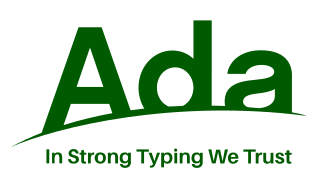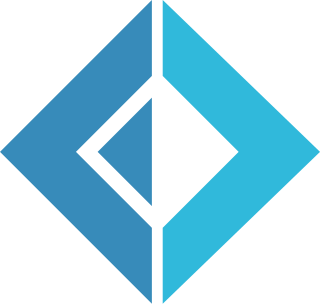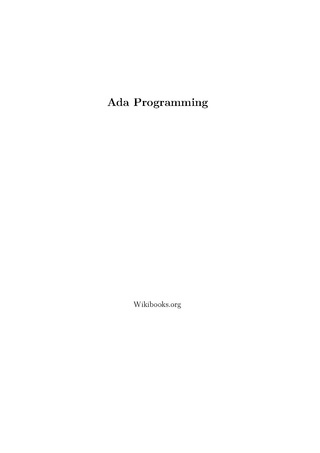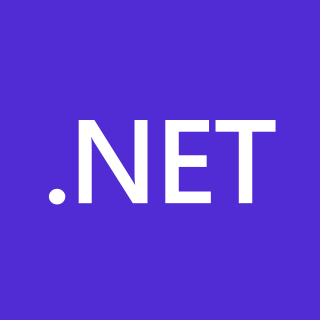
Ada is a structured, statically typed, imperative, and object-oriented high-level programming language, inspired by Pascal and other languages. It has built-in language support for design by contract (DbC), extremely strong typing, explicit concurrency, tasks, synchronous message passing, protected objects, and non-determinism. Ada improves code safety and maintainability by using the compiler to find errors in favor of runtime errors. Ada is an international technical standard, jointly defined by the International Organization for Standardization (ISO), and the International Electrotechnical Commission (IEC). As of 2020, the standard, called Ada 2012 informally, is ISO/IEC 8652:2012.

A "Hello, World!" program is generally a computer program that ignores any input, and outputs or displays a message similar to "Hello, World!". A small piece of code in most general-purpose programming languages, this program is used to illustrate a language's basic syntax. "Hello, World!" programs are often the first a student learns to write in a given language, and they can also be used as a sanity check to ensure computer software intended to compile or run source code is correctly installed, and that its operator understands how to use it.
Mercury is a functional logic programming language made for real-world uses. The first version was developed at the University of Melbourne, Computer Science department, by Fergus Henderson, Thomas Conway, and Zoltan Somogyi, under Somogyi's supervision, and released on April 8, 1995.
In computer science, control flow is the order in which individual statements, instructions or function calls of an imperative program are executed or evaluated. The emphasis on explicit control flow distinguishes an imperative programming language from a declarative programming language.

Visual Basic (VB), originally called Visual Basic .NET (VB.NET), is a multi-paradigm, object-oriented programming language, implemented on .NET, Mono, and the .NET Framework. Microsoft launched VB.NET in 2002 as the successor to its original Visual Basic language, the last version of which was Visual Basic 6.0. Although the ".NET" portion of the name was dropped in 2005, this article uses "Visual Basic [.NET]" to refer to all Visual Basic languages released since 2002, in order to distinguish between them and the classic Visual Basic. Along with C# and F#, it is one of the three main languages targeting the .NET ecosystem. Microsoft updated its VB language strategy on 6 Feb 2023 stating that VB is a stable language now and Microsoft will keep maintaining it.

F# is a functional-first, general-purpose, strongly typed, multi-paradigm programming language that encompasses functional, imperative, and object-oriented programming methods. It is most often used as a cross-platform Common Language Infrastructure (CLI) language on .NET, but can also generate JavaScript and graphics processing unit (GPU) code.
In computer programming, run-time type information or run-time type identification (RTTI) is a feature of some programming languages that exposes information about an object's data type at runtime. Run-time type information may be available for all types or only to types that explicitly have it. Run-time type information is a specialization of a more general concept called type introspection.
Extensible Application Markup Language is a declarative XML-based language developed by Microsoft for initializing structured values and objects. It is available under Microsoft's Open Specification Promise.

The Ada Semantic Interface Specification (ASIS) is a layered, open architecture providing vendor-independent access to the Ada Library Environment. It allows for the static analysis of Ada programs and libraries. It is an open, published interface library that consists of the Ada environment and their tools and applications.
The Web Server Gateway Interface is a simple calling convention for web servers to forward requests to web applications or frameworks written in the Python programming language. The current version of WSGI, version 1.0.1, is specified in Python Enhancement Proposal (PEP) 3333.
In computer programming, an entry point is the place in a program where the execution of a program begins, and where the program has access to command line arguments.

C# is a general-purpose high-level programming language supporting multiple paradigms. C# encompasses static typing, strong typing, lexically scoped, imperative, declarative, functional, generic, object-oriented (class-based), and component-oriented programming disciplines.

Vaadin is an open-source web application development platform for Java. Vaadin includes a set of Web Components, a Java web framework, and a set of tools that enable developers to implement modern web graphical user interfaces (GUI) using the Java programming language only, TypeScript only, or a combination of both.

Node.js is a cross-platform, open-source server environment that can run on Windows, Linux, Unix, macOS, and more. Node.js is a back-end JavaScript runtime environment, runs on the V8 JavaScript Engine, and executes JavaScript code outside a web browser.
LiveCode is a cross-platform rapid application development runtime system inspired by HyperCard. It features the LiveCode Script programming language which belongs to the family of xTalk scripting languages like HyperCard's HyperTalk.
ASP.NET Core was a free and open-source web framework and successor to ASP.NET, developed by Microsoft. It was a modular framework that runs on both the full .NET Framework, on Windows, and the cross-platform .NET. However, ASP.NET Core version 3 only worked on .NET Core, dropping support of the .NET Framework.

.NET is a free and open-source, managed computer software framework for Windows, Linux, and macOS operating systems. It is a cross-platform successor to .NET Framework. The project is mainly developed by Microsoft employees by way of the .NET Foundation, and released under an MIT License.
Ballerina is an open source general-purpose programming language designed by WSO2 for cloud-era application programmers.








